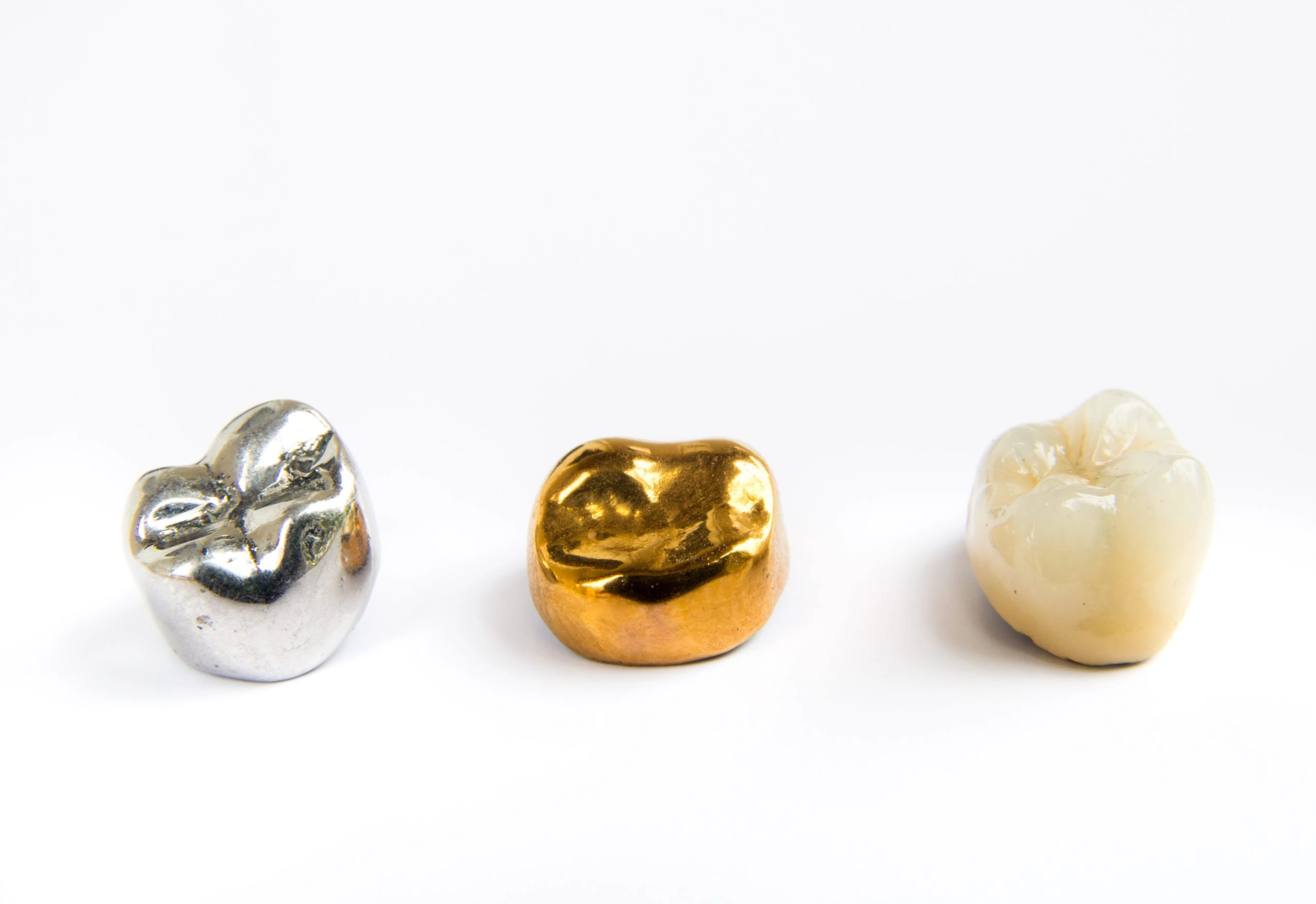In dental care, a crown is a cap placed over a tooth that has been damaged by:
- fracture
- decay
- a root canal
- a large restoration
Dentists also use crowns to improve the look of teeth with stained fillings or to anchor a bridge or denture.
Crowns can cover a tooth completely or partially up to the gum line, depending on their purpose and the tooth’s condition.
Continue reading to explore the various crown types, including gold and gold alloy options.
Gold vs. porcelain
Multiple crown materials are available today. Each carries distinct advantages and disadvantages. Here’s a comparison:
Gold and gold alloy
Gold has been employed in dental restorations for over 4,000 years. Modern dentists commonly mix gold with other metals like palladium, nickel, or chromium. This combination boosts strength and lowers cost.
Gold and gold alloy crowns can look either silver-toned or gold-toned. They seldom chip or fracture, resist wear, and require minimal tooth reduction for placement. These crowns are extremely durable and can endure for many years.
However, due to their metallic appearance, gold alloys are the least tooth-like material. Many people opt to place gold alloy crowns on back molars that aren’t easily seen.
Porcelain
Porcelain crowns are a widely used type of all-ceramic crown. They offer the most lifelike appearance but are not as robust as some other crown materials.
Because of their realistic look, porcelain crowns are commonly chosen for front teeth, which are most visible to others.
Porcelain bonded to precious metal
These crowns consist of porcelain fused to a precious metal base, such as gold. They provide a balance of strength and natural appearance. Yet sometimes the metal beneath the porcelain shows as a dark line.
They have areas susceptible to chipping or cracking and tend to wear the opposing teeth. People often select these crowns for both anterior and posterior teeth.
All ceramic
All-ceramic crowns are frequently fabricated from zirconium dioxide, a very strong material. They often match adjacent teeth’ color closely.
Individuals with metal sensitivities can typically wear all-ceramic crowns without risk of allergic reactions.
Still, all-ceramic crowns usually aren’t as strong as porcelain fused to metal crowns. They may also cause more wear on opposing teeth than metal or resin options.
Pressed ceramic
Pressed ceramic crowns have a porcelain facing bonded to a ceramic core, such as zirconium dioxide. This gives them greater strength than purely all-ceramic crowns, resulting in a durable restoration that retains the natural appearance of porcelain.
Pressed ceramic crowns generally have greater longevity than crowns made entirely of ceramic or porcelain.
All resin
All-resin crowns are constructed from tooth-colored plastic reinforced with glass particles.
They are the least expensive crown option but wear down faster than other materials. Compared with porcelain fused to metal crowns, they are more prone to fracture.
Often, all-resin crowns serve as temporary restorations rather than permanent solutions.
Side effects of gold crowns
Although adverse effects from gold alloy crowns are uncommon, some people may experience issues. Possible side effects include:
- redness
- swelling
- oral or lip pain
- gum irritation and swelling
- oral lesions (oral lichenoid reaction)
- allergic responses, especially with gold-nickel alloys
Some studies have explored links between dental gold alloys and certain health conditions, such as oral cancer, but the evidence is limited and not well-defined.
Researchers advise using metal alloys that resist corrosion; gold is notably corrosion-resistant.
Gold crown cost
Without dental coverage, a gold crown may cost around $2,500, while typical crown prices range from $800 to $1,500 per crown. With insurance, roughly half of the total procedure cost may be covered.
Some dental plans pay for crowns completely or partially, though coverage can be limited or excluded if the crown is deemed cosmetic.
If the crown is required for oral health—such as after a root canal or to restore a decayed or heavily filled tooth—insurance usually covers it.
The final cost depends on your insurance, crown material, oral health, and geographic location. The full procedure typically includes:
- dental X-rays
- a clinical exam
- the crown itself
- placement of the crown
- usually at least one follow-up visit
Gold crown tooth pictures

Takeaway
When it comes to crowning a tooth, there are many material choices. Gold and gold alloy crowns provide strength, longevity, and solid value.
Yet with newer materials that mimic natural tooth appearance more closely, you may want to explore other options. Consult your dentist to determine the best crown type for your situation.


















Leave a Reply
You must be logged in to post a comment.